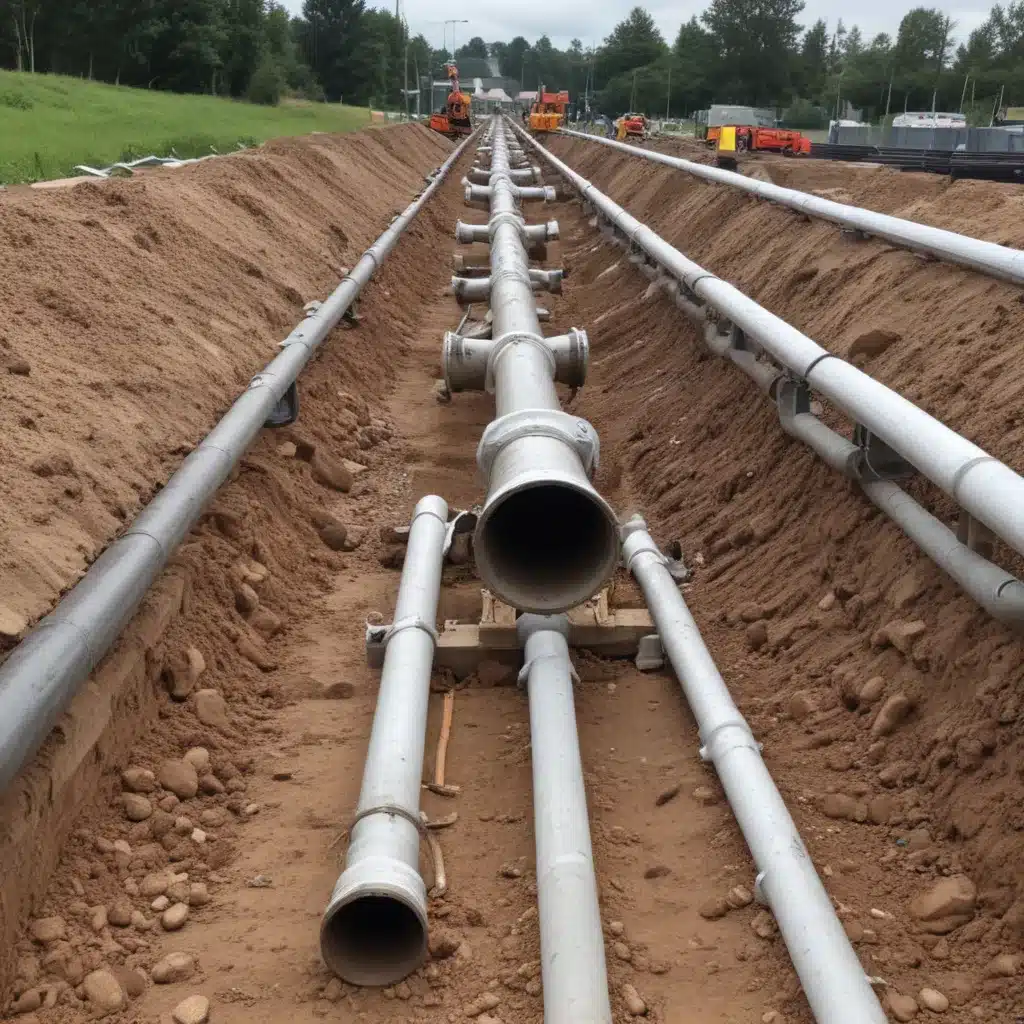
As an experienced plumbing consultant, I’ve witnessed firsthand the evolving landscape of pipe rehabilitation technologies. We learned this the hard way… Gone are the days when addressing deteriorating or leaking pipes meant extensive excavation, landscape disruption, and significant downtime for building occupants. The emergence of trenchless pipe rehabilitation methods has revolutionised the way we approach pipe maintenance and replacement, offering a sustainable and non-invasive solution to the common challenges faced by building owners and facility managers.
Pipe Condition Assessment
Effective pipe rehabilitation begins with a comprehensive assessment of the existing piping system. Non-Destructive Evaluation (NDE) Techniques play a crucial role in this process, allowing us to accurately identify issues without causing unnecessary damage. Advanced methods such as closed-circuit television (CCTV) inspections and ultrasonic testing provide valuable insights into the structural integrity and overall condition of the pipes, enabling us to pinpoint problem areas and develop targeted rehabilitation strategies.
Visual inspection techniques, such as endoscopic evaluations, provide an up-close view of the pipe’s interior, allowing us to detect cracks, corrosion, scale buildup, and other defects that could lead to leaks or flow restrictions. By combining these assessment methods, we can gain a thorough understanding of the pipe’s condition and determine the most appropriate course of action.
Leakage Risk Factors
Identifying and mitigating the risk of pipe leaks is a critical aspect of any rehabilitation project. Water pressure monitoring is an essential tool in this process, as it helps us identify areas of the system experiencing high or low pressures that could contribute to premature failures. Alongside pressure analysis, we also consider pipe sizing and flow dynamics, ensuring that the newly rehabilitated system can handle the building’s water demand without compromising performance.
Equally important is the assessment of the overall drainage layout, which can significantly impact the risk of leaks and water damage. By understanding the interconnected nature of the plumbing system, we can identify potential problem areas, such as poorly graded pipes or improper slope, and address them through targeted rehabilitation measures.
Trenchless Rehabilitation Techniques
The true game-changer in pipe rehabilitation is the availability of trenchless technologies, which allow us to restore and replace pipes without the need for extensive excavation. One of the most widely adopted methods is pipe relining, also known as Cured-in-Place Pipe (CIPP). This technique involves the installation of a resin-impregnated liner within the existing pipe, which then hardens to form a seamless, jointless pipe-within-a-pipe structure. This approach effectively seals leaks, restores structural integrity, and extends the lifespan of the piping system.
Another innovative trenchless solution is pipe bursting, which involves fracturing the existing pipe while simultaneously pulling a new, larger-diameter pipe through the broken fragments. This method is particularly useful when upsizing the pipe to accommodate increased water demand or address issues with undersized or collapsed pipelines.
For cases where the existing pipe is beyond repair, trenchless pipe replacement options, such as horizontal directional drilling (HDD), provide a minimally disruptive alternative. HDD allows us to install new pipes beneath the surface, avoiding the need for traditional open-cut excavation and minimising the impact on the surrounding environment.
Regulations and Compliance
Plumbing and drainage systems in the UK are subject to a range of building code requirements and environmental regulations. As plumbing consultants, we double-check that that all rehabilitation projects adhere to the latest standards, such as the Water Supply (Water Fittings) Regulations 1999 and the Building Regulations 2010. This includes obtaining the necessary permits and approvals from local authorities, as well as conducting thorough environmental impact assessments to mitigate any potential disruptions to the surrounding area.
Benefits of Trenchless Pipe Rehabilitation
The advantages of trenchless pipe rehabilitation techniques are numerous and far-reaching. Perhaps most notably, these methods minimise disruption to building occupants, as they eliminate the need for extensive excavation and landscaping work. This translates to reduced downtime, fewer interruptions to daily operations, and a better overall experience for the building’s users.
From a financial perspective, trenchless rehabilitation offers a more cost-effective solution compared to traditional pipe replacement. By avoiding the high costs associated with excavation, surface restoration, and waste disposal, building owners can realise significant savings while ensuring the long-term performance and durability of their plumbing infrastructure.
Advanced Monitoring and Maintenance
Effective pipe rehabilitation is not just about the initial installation; it also involves continuous monitoring and proactive maintenance to double-check that the system’s optimal performance. Innovative leak detection technologies, such as fibre-optic sensors and acoustic monitoring systems, allow us to quickly identify and address any emerging issues, minimising the risk of water damage and costly repairs.
Alongside real-time monitoring, we also employ predictive maintenance strategies, which leverage data analysis and machine learning to anticipate potential problems before they occur. This approach enables building owners to plan and budget for maintenance activities, ultimately extending the lifespan of the rehabilitated pipes.
Sustainability and Environmental Impact
As the plumbing industry increasingly focuses on sustainable practices, trenchless rehabilitation methods play a significant role in reducing the environmental impact of pipe maintenance and replacement projects. By minimising the need for excavation and surface disruption, these techniques help conserve water resources, minimise waste generation, and lower greenhouse gas emissions associated with traditional construction activities.
Furthermore, the long-lasting durability of trenchless pipe rehabilitation solutions contributes to a more sustainable built environment, reducing the frequency of future replacement cycles and the associated resource depletion. As building owners and facility managers seek to align their operations with environmental, social, and governance (ESG) standards, trenchless pipe rehabilitation emerges as a key strategy in their sustainability efforts.
At Plumbing Drains North Wales, our team of experienced plumbing consultants is dedicated to providing innovative and sustainable solutions for our clients. By leveraging the power of trenchless pipe rehabilitation techniques, we can help you minimise leakage risks, optimise your plumbing and drainage systems, and contribute to a more environmentally responsible future. Contact us today to learn more about how our expertise can benefit your building or facility.

